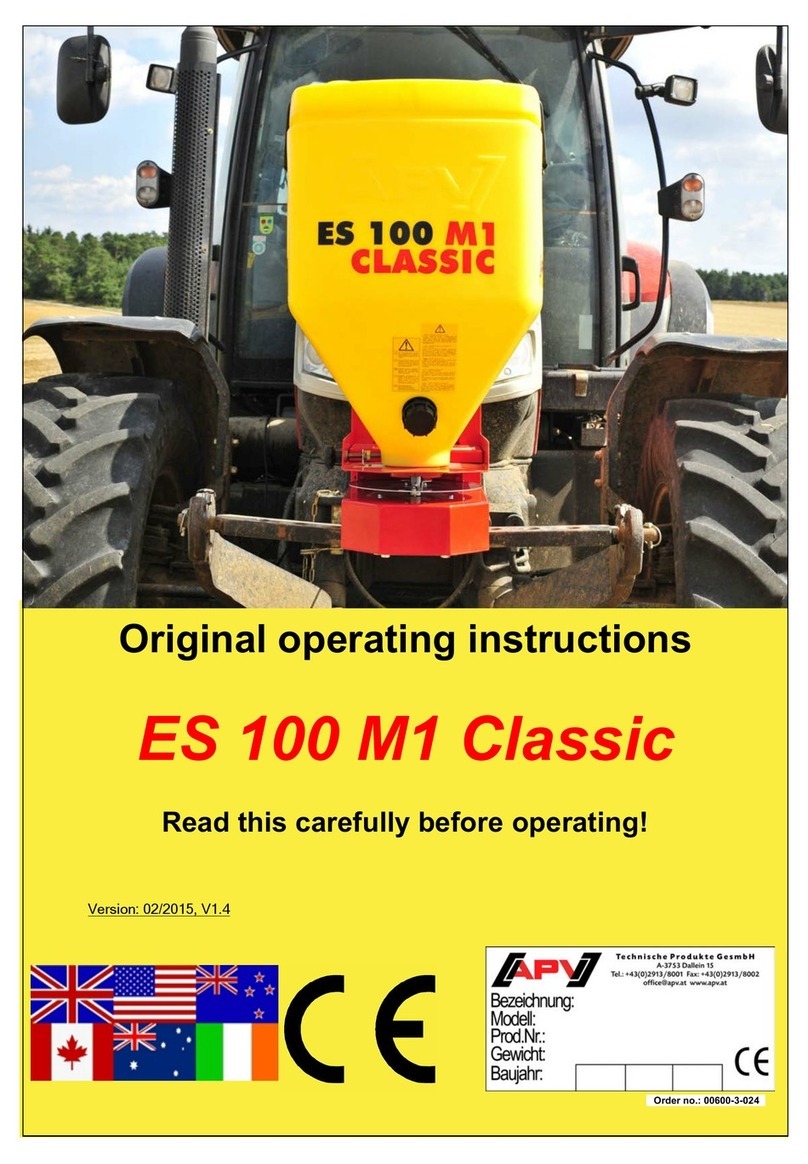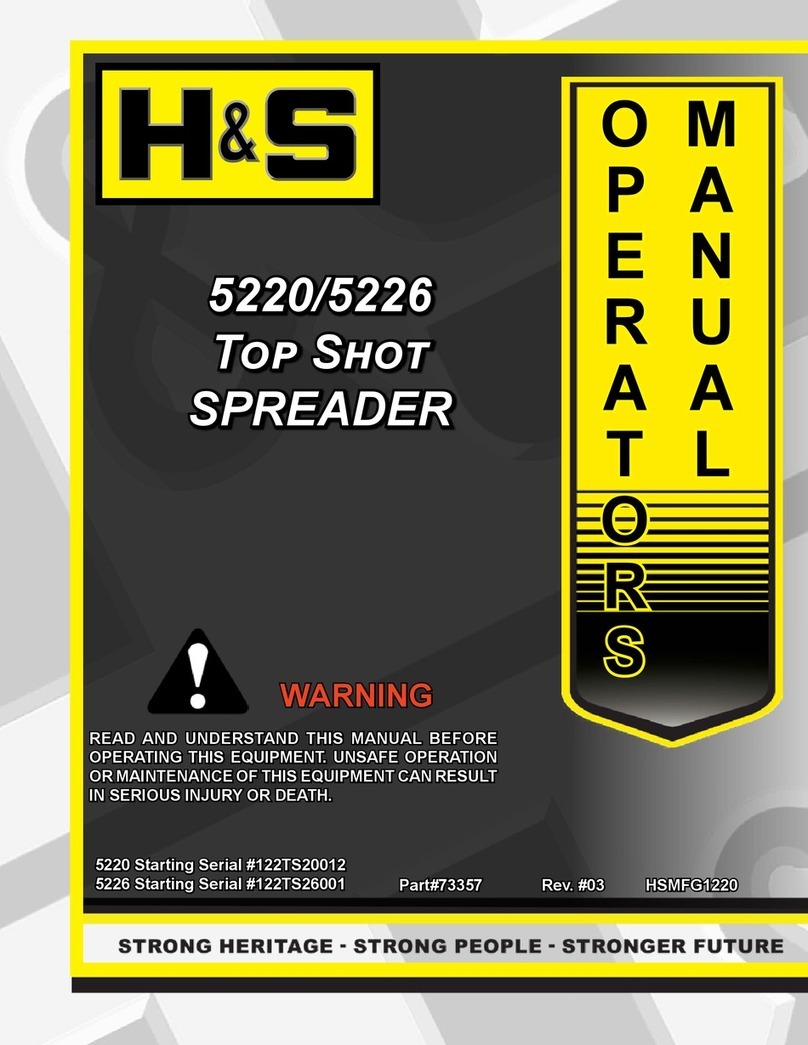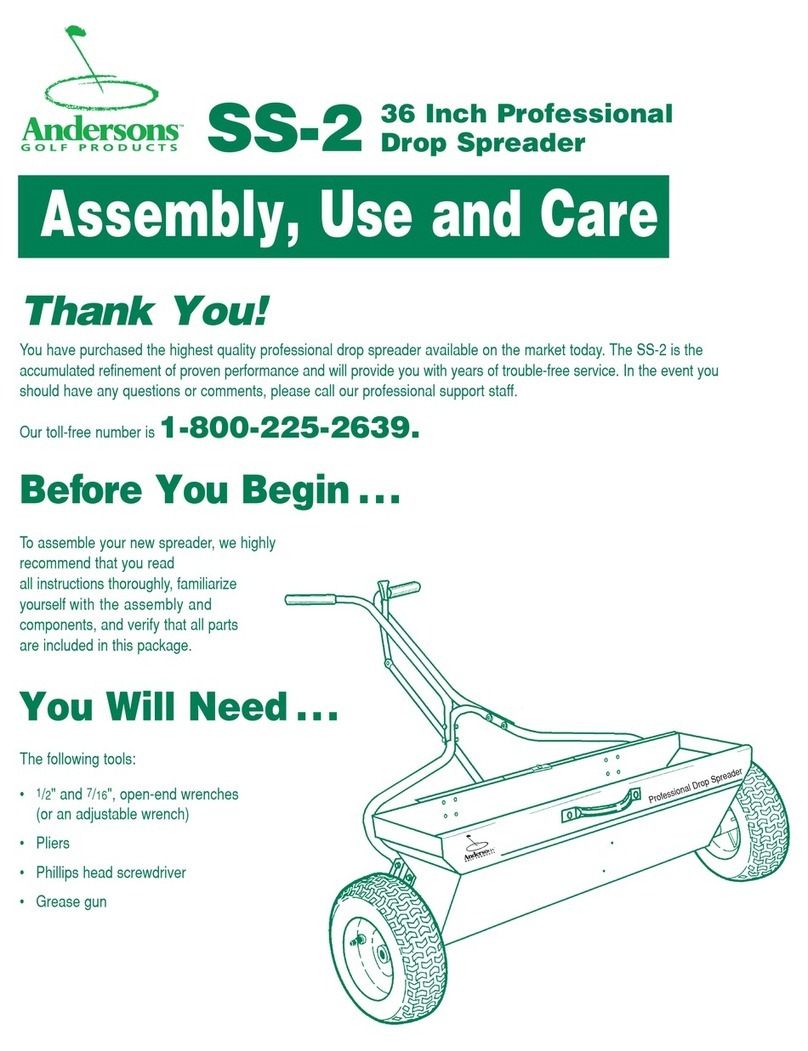
TABLE OF CONTENTS .................................................................................................page
PREFACE ..........................................................................................................................37
WARRANTY CONDITIONS .............................................................................................37
TYPE- AND SERIALNUMBER OF YOUR MACHINE...................................................37
SAFETY INSTRUCTIONS ...............................................................................................38
EXPLANATION OF SAFETY DECALS ATTACHED TO THE MACHINE ...................39
1 DESCRIPTION.............................................................................................................40
2 MOUNTING BEHIND THE TRACTOR ......................................................................42
3 TRANSPORT ...............................................................................................................43
4 MACHINE ADJUSTMENTS........................................................................................44
4.1 Output rates .......................................................................................................44
4.2 Spreading width.................................................................................................47
4.2.1 Spinner discs speed........................................................................................47
4.2.2 PTO output ...................................................................................................48
4.2.3 Forward inclination .........................................................................................49
4.3 Working height...................................................................................................49
4.4 Tilting for headland spreading.........................................................................50
5 WORKING WITH THE CENTERLINER®...................................................................51
5.1 Working with the CENTERLINER S/SL®........................................................51
5.2 Operation schedule...........................................................................................53
5.3 Check of spreading width ................................................................................53
5.4 Check of output rate .........................................................................................54
6 DISMOUNTING FROM THE TRACTOR ...................................................................55
7 MAINTENANCE ...........................................................................................................56
7.1 Maintenance after operation............................................................................56
7.2 Lubrication .........................................................................................................56
7.3 Intermittent maintenance .................................................................................57
Bijlagen
A CONDENSED OPERATING INSTRUCTIONS ...............................................61
B OPTIONAL EXTRAS.........................................................................................62
C TECHNICAL DETAILS ......................................................................................64
35



























